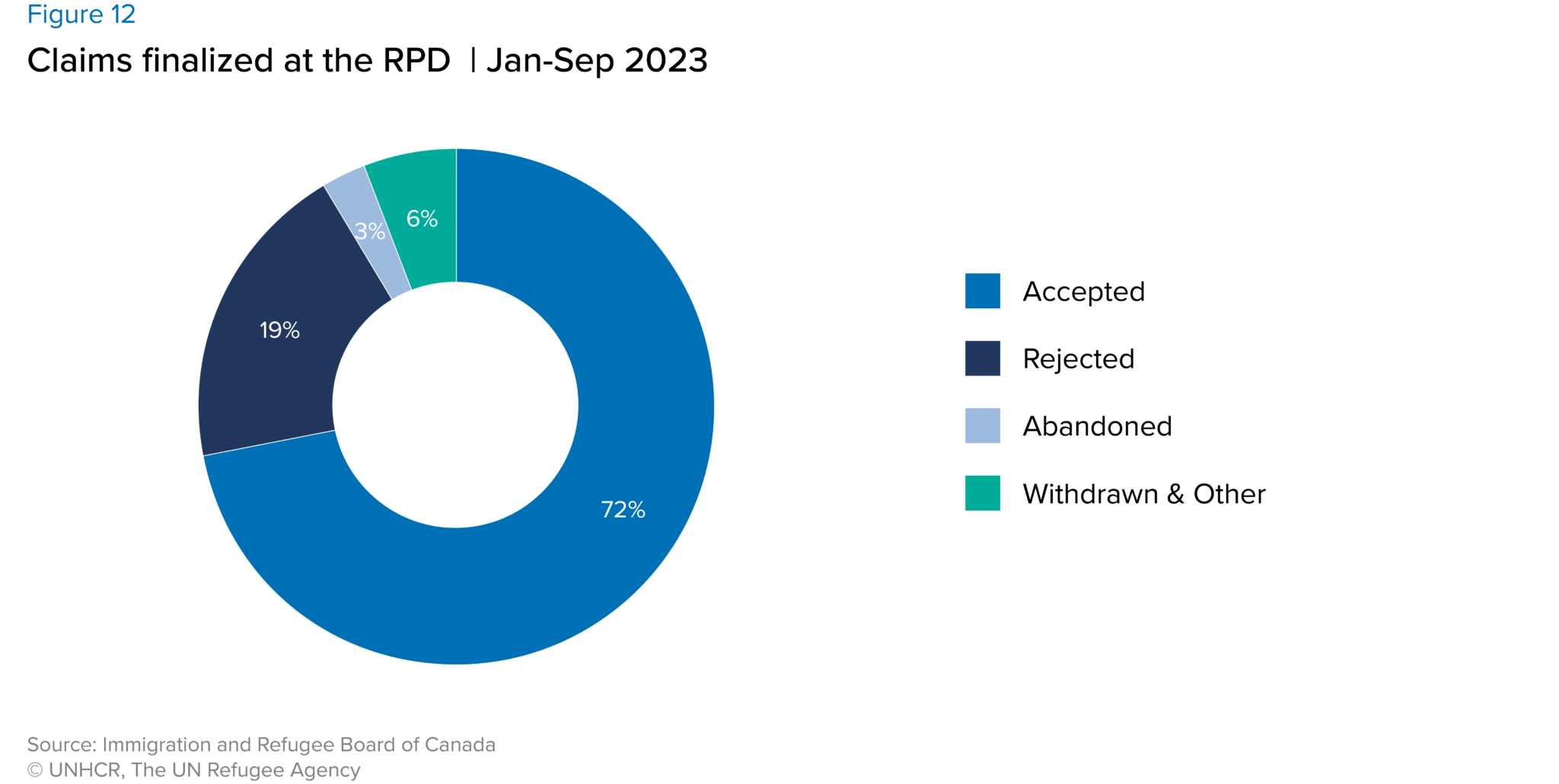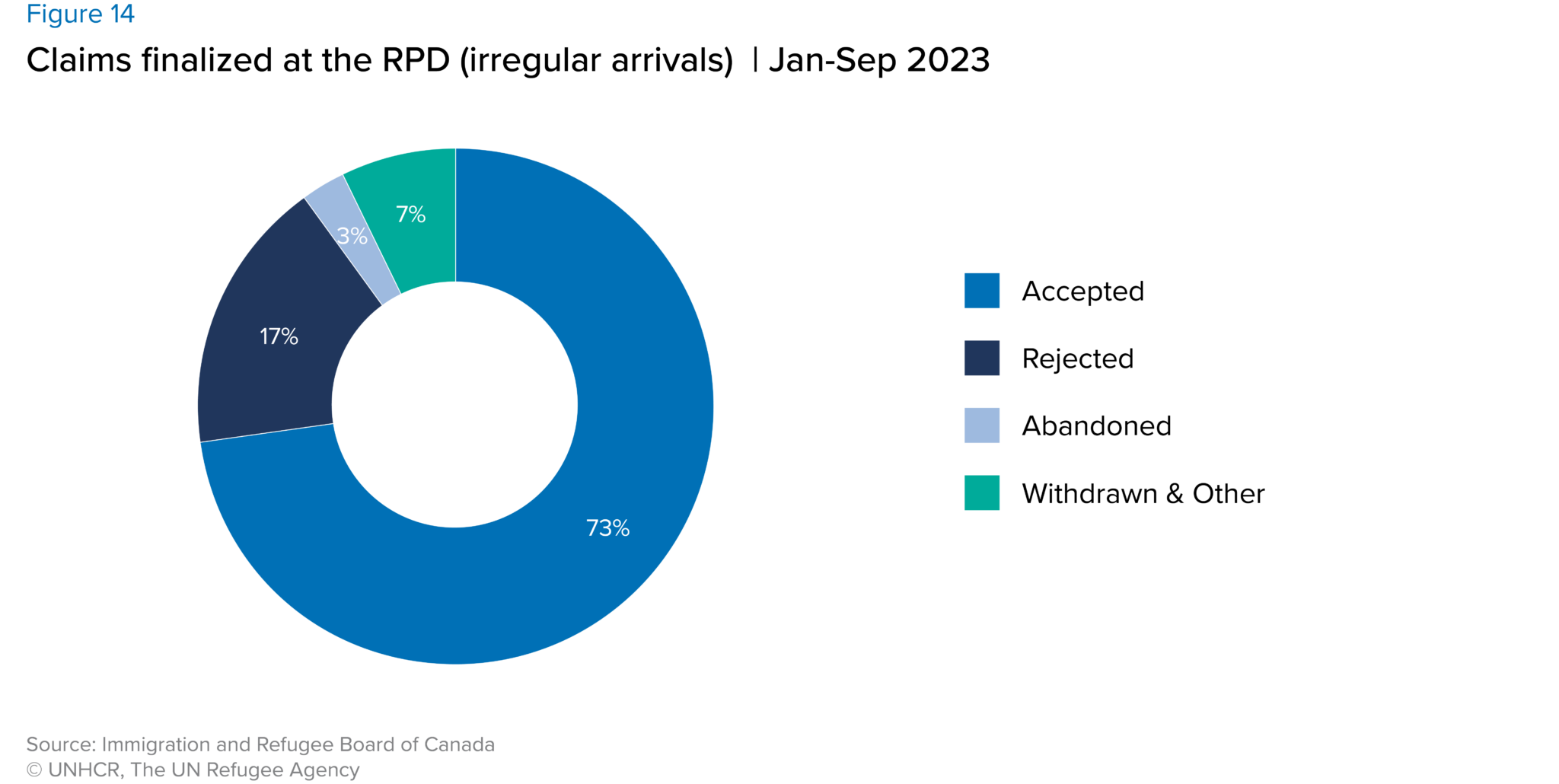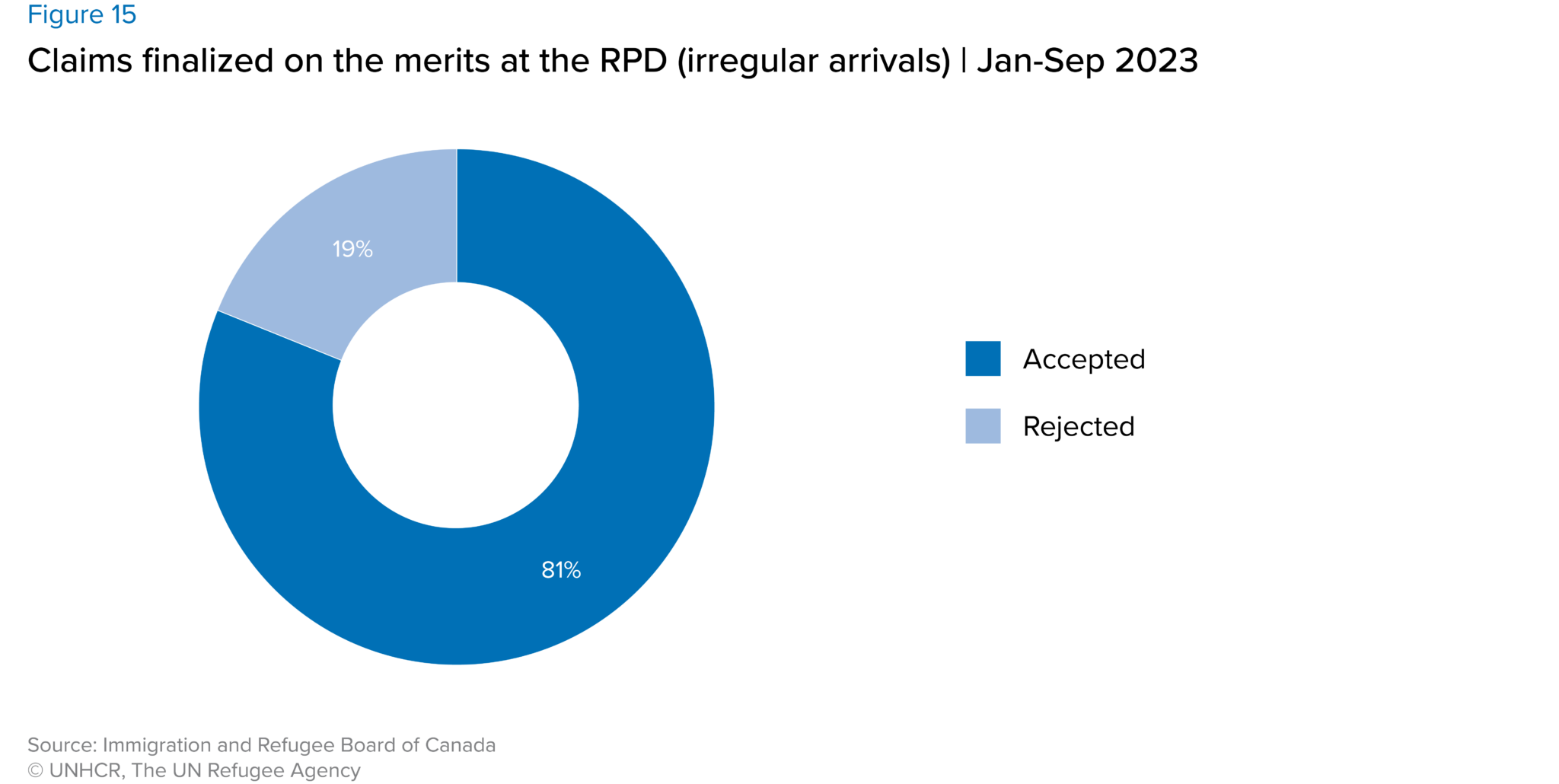Statistics on Asylum-Seekers in Canada
Last updated: March 2024
Photo: © UNHCR/Soo-Jung Kim
Canada has been a signatory to the 1951 Convention on the Status of Refugees since 1969 and respects the individual right to claim asylum. The government has set up a system so individuals can have their asylum applications assessed and determined by an independent tribunal known as the Immigration and Refugee Board (IRB).
Facts and Figures | 2023
Seeking asylum is a fundamental human right enshrined in the 1948 Universal Declaration of Human Rights and then again in the 1951 Refugee Convention and its 1967 Protocol.
Asylum-seekers are individuals who have fled their country due to fear of persecution on the grounds of their race, religion, nationality, political opinion, or membership in a particular social group and whose request for protection by the host country has yet to be processed.
Overall asylum-seekers in Canada
Canada received a record number of asylum claims in 2023, which is more than 1.5 times the previous record set in 2022.
Asylum claims in 2023
In this time of unprecedented global displacement, these numbers are not surprising. At the end of June 2023, an estimated 110 million people have been forcibly displaced from their homes due to persecution, conflict, violence, human rights violations, and events seriously disturbing public order. Approximately 75 per cent of the world’s refugees are hosted in low- and middle-income countries.

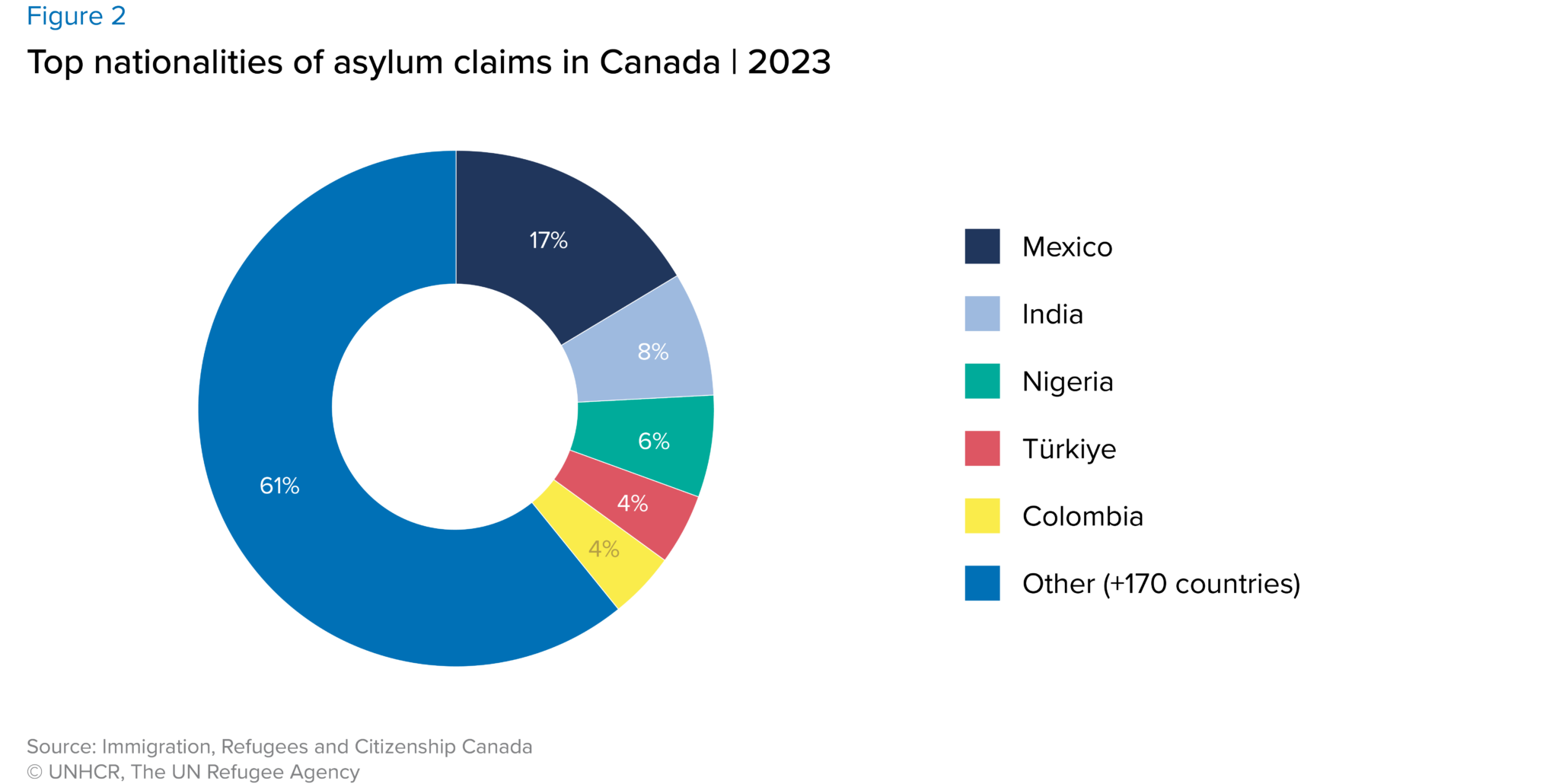
Distribution of asylum claims in Canada by office type and province
%
Asylum claims in Canada were made at an official land border post, an airport or an inland office
%
Asylum claims in Canada were made by asylum-seekers intercepted in-between official land border posts
Persons who make an asylum claim at the Canadian land border are subject to the Safe Third Country Agreement (STCA). The STCA is an agreement between Canada and the U.S. which requires asylum-seekers to make their claim in the initial country they arrive in, be it Canada or the U.S. Consequently, persons arriving at a Canadian land border to seek asylum are sent back to the U.S., unless they fall under specific exceptions to the Agreement, such as having qualifying family members in Canada.
Before 25 March 2023, the STCA only applied to official land border posts and did not extend to asylum-seekers who crossed the border irregularly in-between official border posts. Such individuals were allowed into Canada to pursue their asylum claim. Since 25 March 2023, the STCA was expanded to include asylum-seekers intercepted between land ports of entry. The legislative change was followed by a significant drop in irregular crossings.
Approximately 15,000 asylum-seekers entered Canada through an irregular land crossing in 2023, marking a significant decline from the nearly 40,000 irregular arrivals made in 2022. Most of these irregular entries in 2023 happened between January and March before the STCA expansion, with less than a thousand in the remaining nine months of the year.
In the first three months of 2023, prior to the STCA expansion, Quebec accounted for 64% of all asylum claims in Canada. Following the drop in irregular crossings in the province, Ontario became the province with the highest number of claims in Canada from April to December 2023 (48%), closely followed by Quebec (41%).
Despite the STCA expansion and the resulting decrease in irregular asylum claims, there has been a persistent increase in asylum claims from May to December 2023, primarily attributed to an increase in airport and inland claims.
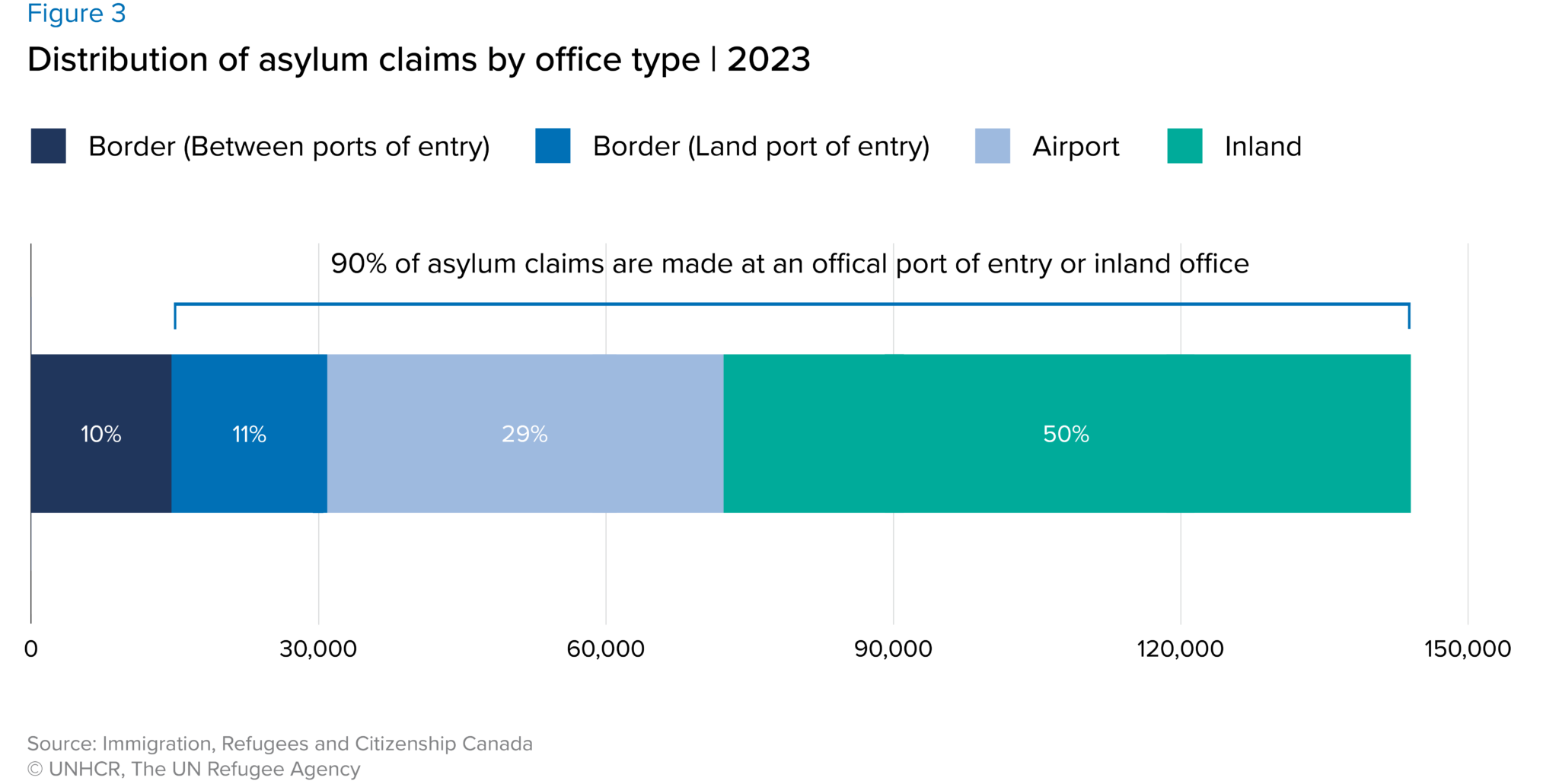

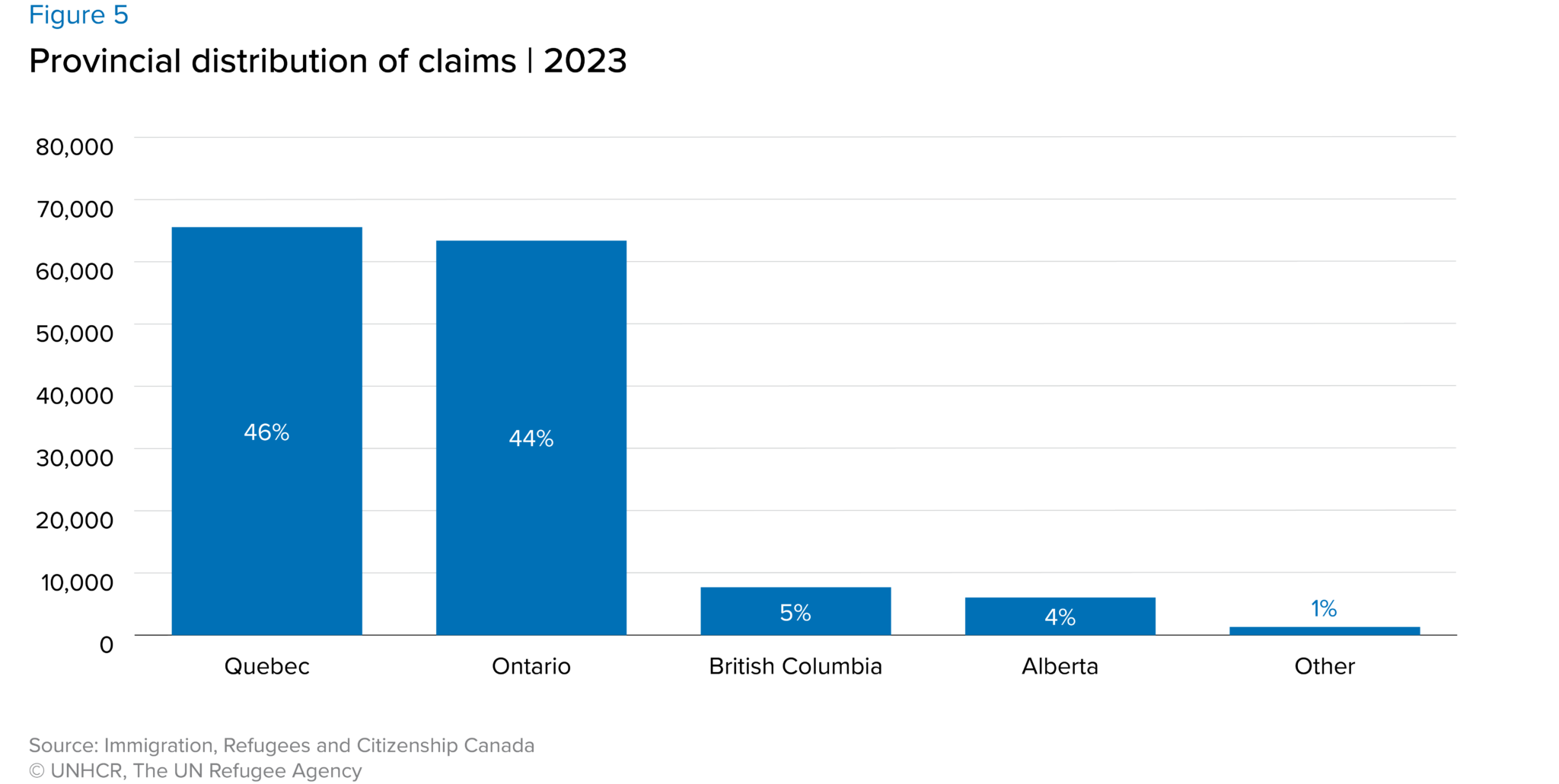

Irregular or illegal? Under international law, crossing a border irregularly between official ports of entry is not illegal if done to claim asylum. The right to seek asylum is a human right and remains protected irrespective of the method or mode of entry into a country.

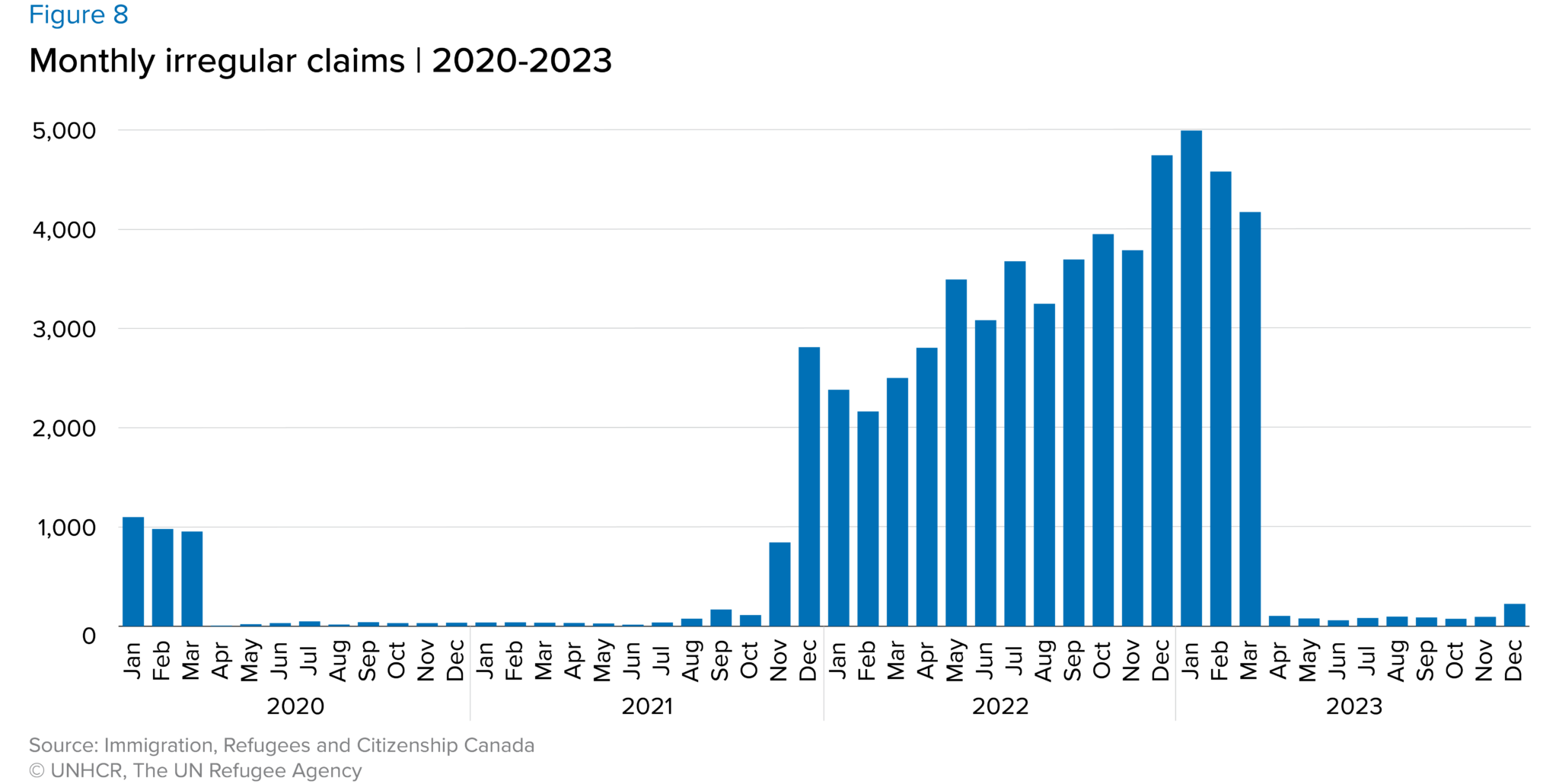
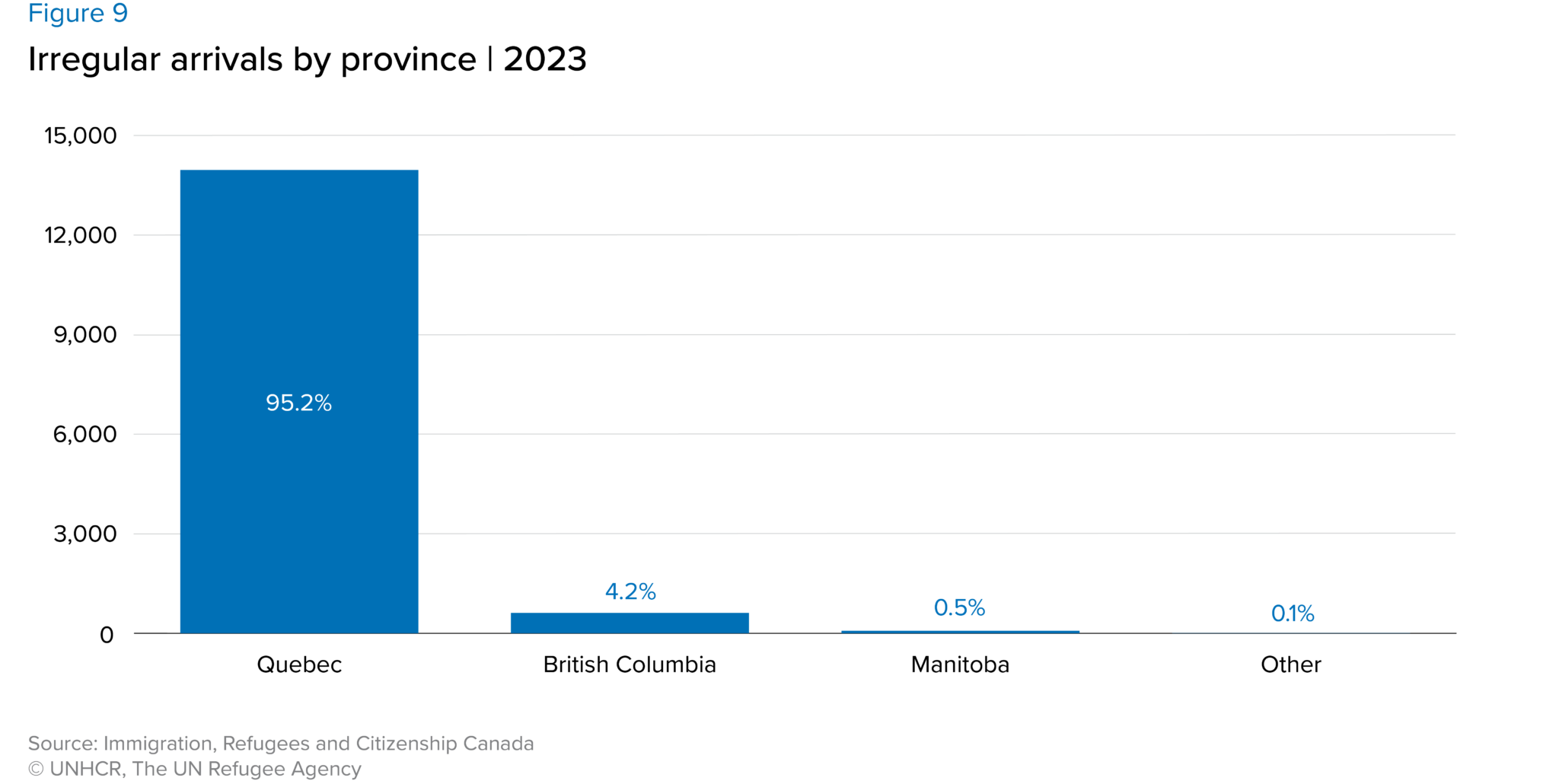
Refugee status determination at the Immigration Refugee Board
The first step of the asylum process is the eligibility interview. After claiming asylum, government officials will verify the asylum-seeker’s identity, perform a security screening and conduct an interview to determine if the person is eligible to go on the second step of the asylum process. If so, the person’s asylum claim will be referred to the Immigration and Refugee Board of Canada (IRB).
The IRB is Canada’s largest independent administrative tribunal responsible for making well-reasoned decisions on immigration and refugee matters in accordance with the law. The Refugee Protection Division (RPD) of the IRB reviews asylum applications to determine whether the applicants have a well-founded fear of persecution if returned to their country of origin, in line with international and Canadian law. The merit of each claim is assessed on an individual basis during a hearing, based on the evidence and arguments presented.
If an asylum-seeker’s claim is accepted, the person obtains refugee/protected status, can stay in Canada, and eventually apply to become a permanent resident. If the claim is rejected and all legal recourses have been exhausted, the person will have to leave the country.
It can take a few years between the time a person makes an asylum claim and the time the claim is assessed by the RPD. The statistics below refer only to claimants who have reached the IRB stage of the asylum process.

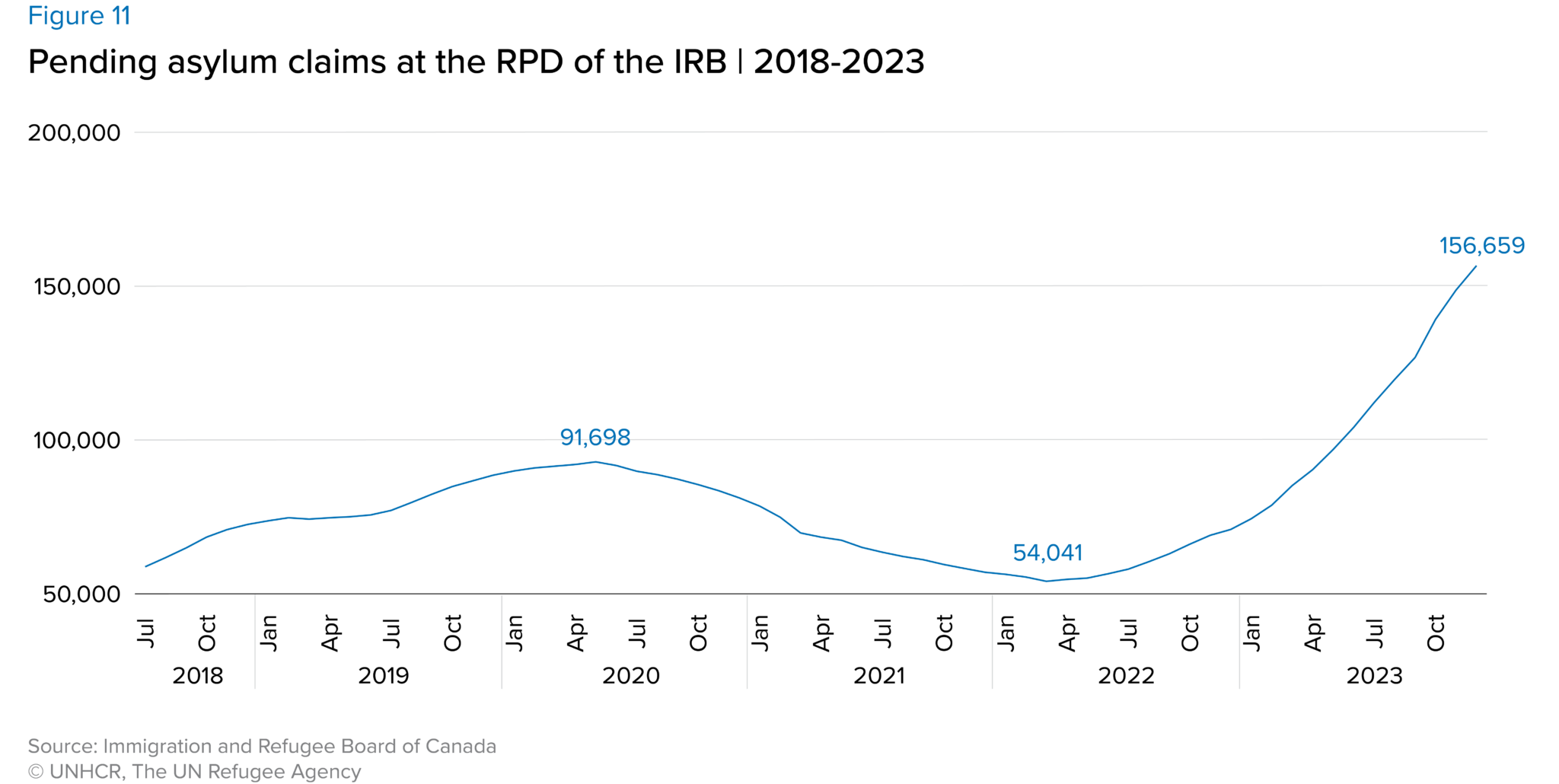
The two graphs below include different data sets. Figures 12 and 14 show acceptance rates based on the total number of claims that were processed and finalized, including claims that were closed following a withdrawal or an abandonment. Withdrawn and abandoned cases are not evaluated on the merits of the asylum claim. Figures 13 and 15 show the acceptance rate only for cases that were evaluated on the merits of their asylum claim, based on the evidence and arguments presented.
